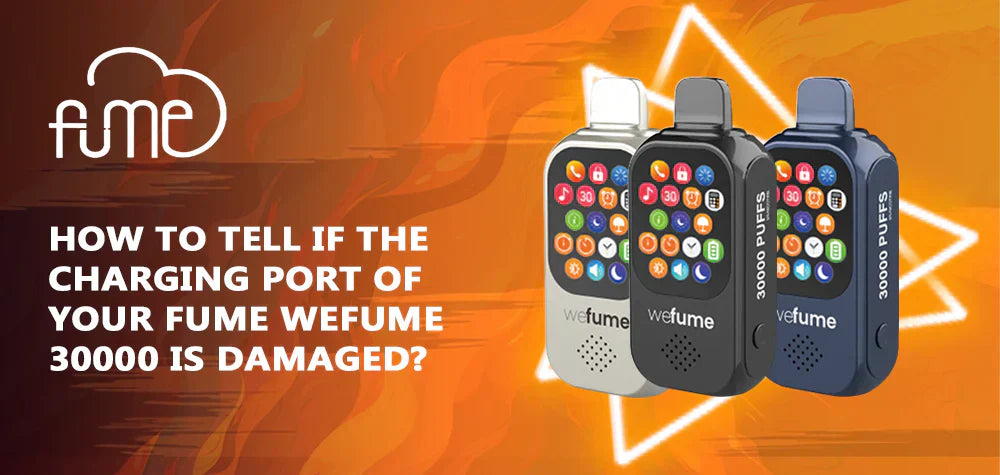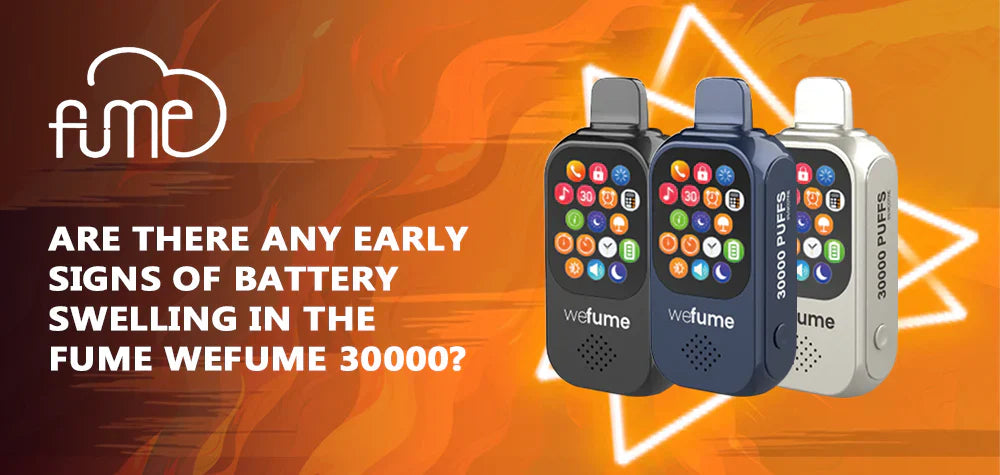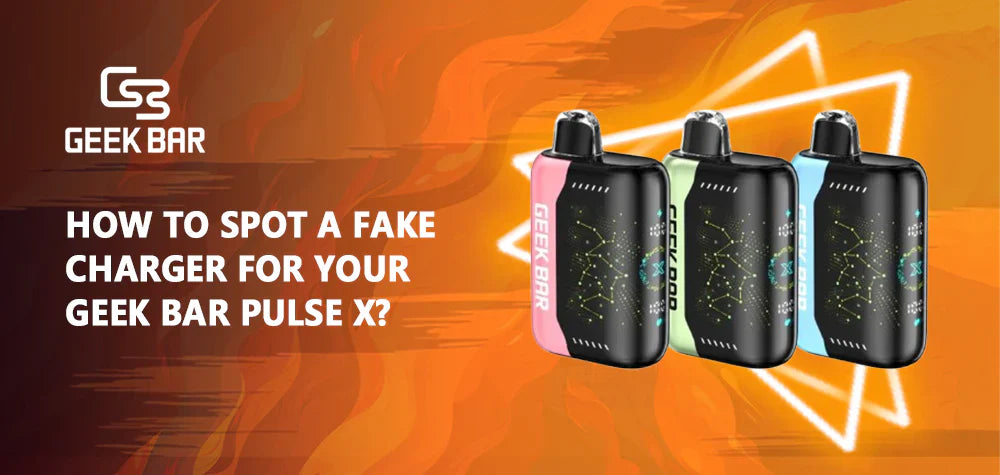
How To Tell If The Charging Port Of Your Fume WeFume 30000 Is Damaged?
The Fume WeFume 30000 is a high-capacity rechargeable disposable vape device that has gained popularity for its impressive puff count and quick charging capabilities. Like any electronic device, its performance heavily depends on the integrity of its charging port. A damaged charging port can lead to charging failures, intermittent power issues, or even overheating, which may compromise both the device's functionality and safety. This article provides a thorough, professional guide on how to identify if the charging port of your Fume WeFume 30000 is damaged, signs to watch for, and how to maintain the port to ensure optimal device performance.
The Role and Importance of the Charging Port
The charging port on your Fume WeFume 30000 serves as the critical connection point between the device and the power source. It allows electrical current to flow from the USB Type-C cable into the device's internal battery, enabling recharging. Because this port is a small, delicate component exposed to frequent use and environmental factors, it is prone to damage from physical wear, debris buildup, or improper handling. Any impairment to the charging port can disrupt the charging process, causing the device to fail to charge properly or at all.
Common Signs Indicating a Damaged Charging Port
One of the earliest and most obvious signs of a damaged charging port is inconsistent or failed charging. If your Fume WeFume 30000 does not charge at all when connected to a power source, or if the LED indicator light flickers, blinks erratically, or turns off and on when the charging cable is moved slightly, this often points to a loose or damaged connection within the port. Normally, when charging properly, the device's LED should glow steadily to indicate a stable power flow.
Another symptom is if the device takes much longer than usual to charge or fails to reach a full charge despite being connected for the recommended time. This can be caused by poor electrical contact inside the port, which restricts power transfer. Additionally, if the device becomes unusually warm or overheats while charging, this may indicate increased electrical resistance due to damage or debris in the charging port.
Physical examination may reveal visible damage such as bent or broken pins inside the port, corrosion, or accumulation of dirt and lint that cannot be removed easily. If the charging cable feels loose or wobbly when inserted, this is a strong indication that the port's internal components might be compromised.
How to Inspect and Test the Charging Port
To determine if the charging port is damaged, start with a careful visual inspection. Use a bright light or magnifying glass to look inside the port for any signs of debris, corrosion, bent pins, or physical deformities. Sometimes, what seems like damage could simply be dirt or lint obstructing the connection.
Before concluding the port is damaged, it is advisable to clean it. The tools needed to clean the charging port typically include a can of compressed air, a soft-bristled brush, and possibly a wooden or plastic toothpick to gently dislodge stubborn debris. Avoid using metal objects that could cause further damage.
After cleaning, test the device by connecting it with a known good USB-C cable and charger. Observe the LED indicator closely. If the light flickers or the device only charges intermittently when the cable is moved, this suggests a poor connection likely caused by port damage. Trying different cables and chargers can help rule out accessory issues and isolate the problem to the port itself.
Preventive Maintenance and Proper Handling
Preventing damage to the charging port is crucial for the longevity of your Fume WeFume 30000. Always handle the charging cable gently when plugging and unplugging to avoid bending or stressing the port's internal pins. Avoid forcing the cable into the port if it does not fit easily.
Regular maintenance includes keeping the charging port clean and free from dust, lint, or e-liquid residue. Using the appropriate tools to clean the port periodically will help maintain good electrical contact and prevent charging issues. Additionally, avoid exposing the device to moisture or extreme temperatures, as these can accelerate corrosion or physical damage to the port.
Using only the original or manufacturer-recommended charging cables and adapters ensures stable power delivery and reduces the risk of damage caused by incompatible or faulty accessories.
When to Seek Professional Help or Replace the Device
If you have thoroughly cleaned the charging port, tested multiple cables and chargers, and still experience charging problems such as flickering LED lights, intermittent charging, or no charging at all, it is likely that the charging port is physically damaged. Since the Fume WeFume 30000 is a disposable vape device, repairing the charging port is generally not feasible.
Continued use of a device with a damaged charging port can lead to further battery damage or safety hazards such as short circuits or overheating. In such cases, the safest and most practical solution is to replace the device. If your device is still under warranty, contact the retailer or manufacturer for possible exchange or refund options.
Conclusion
Identifying a damaged charging port on your Fume WeFume 30000 involves careful observation of charging behavior, physical inspection, and proper troubleshooting. Signs such as the device not charging at all, flickering or erratic LED lights, slow or interrupted charging, and physical damage inside the port are key indicators of port issues. Using the appropriate tools needed to clean the charging port and maintaining gentle handling can often prevent or resolve minor connectivity problems.
If damage is confirmed and cleaning or accessory changes do not fix the issue, replacing the device is the safest course of action. By understanding these signs and taking proactive care, you can ensure your Fume WeFume 30000 charges properly and delivers a reliable vaping experience.


